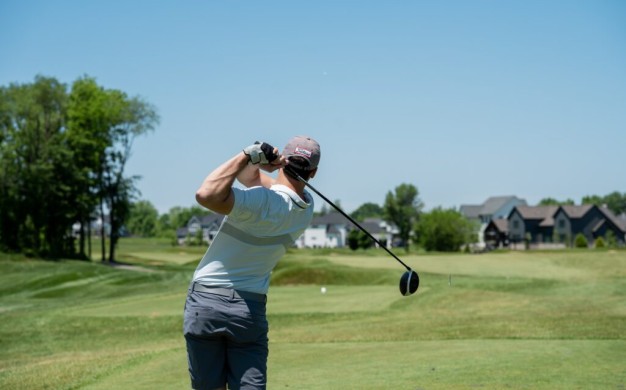Listen to this Article

Image Source: krontech.ca
Gone are the days of relying solely on coaches’ eyes to improve athletic performance. Thanks to the advancements in technology, high-speed cameras have taken over the sports world, revolutionizing swing analysis and boosting athleticism like never before. In this blog post, we’ll dive into the science behind how these powerful tools are changing the game for athletes everywhere.
Introduction to Swing Analysis
There are a lot of different ways to analyze a golf swing, but high-speed cameras are becoming increasingly popular. Why? Because they can provide detailed information about the mechanics of the swing that can help golfers make necessary adjustments.
While there are many factors that go into a good golf swing, there are three main elements that a high-speed camera can help identify: clubhead speed, clubface angle, and attack angle. By analyzing these elements, golfers and their instructors can pinpoint areas of improvement.
Clubhead speed is perhaps the most important factor in determining distance. A high-speed camera can capture clubhead speed at impact, which can then be used to calculate how fast the club was moving at various points throughout the swing. This information can be used to help a golfer generate more speed or make necessary adjustments to their swing.
Clubface angle is another important element that can affect both accuracy and distance. A high-speed camera can help identify when the clubface is open or closed at impact, which can be used to make necessary corrections. Attack angle is also captured by high-speed cameras, and this information can be used to ensure that the club is entering the ball on the correct path.
By using high-speed cameras to capture all of this data, golfers and their instructors can get a much clearer picture of what’s happening during the swing. With this information, they can make more informed decisions about what needs to be changed.
How Highspeed Cameras are Used in Swing Analysis
Highspeed cameras are becoming increasingly popular in the world of swing analysis. This is because they offer a level of detail and accuracy that was previously impossible to achieve. By analyzing a player’s swing at high speeds, coaches and trainers can identify small flaws and correct them. This can lead to big improvements in performance.
There are many different ways that highspeed cameras can be used to analyze a swing. One common method is to use two cameras, set up at different angles, to capture the action. This allows for a side-by-side comparison of the two swings. Another method is to use a single camera to capture the action from start to finish. This provides a more detailed view of the entire swing.
Once the footage has been captured, it can be slow down and studied frame by frame. This allows coaches and trainers to see exactly what is happening at each stage of the swing. By identifying small flaws, they can make corrections that will lead to big improvements in performance.
The Benefits of Using Highspeed Cameras
Highspeed cameras are becoming increasingly popular in the world of sports. Their ability to capture very fast movements makes them ideal for analyzing an athlete’s technique. Here are some of the benefits of using highspeed cameras for swing analysis:
- Increased accuracy
Highspeed cameras allow you to slow down the action and see things that you would miss if you were just watching in real time. This can help you identify small improvements that can make a big difference in your performance. - Better understanding of the mechanics
When you analyze your swing with a highspeed camera, you can get a better understanding of the mechanics involved. This can help you make adjustments to improve your technique. - Greater insight into your strengths and weaknesses
By looking at your swing from different angles, you can get a better idea of what areas need improvement. This knowledge can help you focus your training so that you can make the most progress possible. - Improved performance
The ability to see your swing in slow motion and identify areas for improvement can lead to better performance on the field or court. Highspeed cameras can help you take your game to the next level.
How Swing Analysis is Improving Sports Performance
Swing analysis is the process of using high-speed cameras to capture and analyze an athlete’s movement. This technology is often used in golf and baseball, but can be applied to any sport where improving performance through proper technique is a priority.
There are many benefits to swing analysis, but the most important is that it provides athletes with feedback that they can use to improve their technique. When an athlete knows exactly what they need to work on, they can make the necessary adjustments and see real results on the field or court.
Another benefit of swing analysis is that it can help coaches identify areas where their athletes need improvement. By analyzing an athlete’s swing, coaches can pinpoint specific areas that need attention and create customized training programs to help their athletes reach their full potential.
Finally, swing analysis is a valuable tool for research purposes. By studying how athletes move, scientists can learn more about human movement and performance. This knowledge can then be used to develop new training methods and techniques that will help athletes of all levels reach their goals.
Case Studies of Professional Athletes Utilizing Swing Analysis
Swing analysis is a field of study that uses high-speed cameras to capture and analyze the motion of an athlete’s swing. This information can be used to improve the athlete’s performance and prevent injury.
There are many case studies of professional athletes who have utilized swing analysis to improve their game. One such example is golfer Tiger Woods. Woods used swing analysis early in his career to help him make minor adjustments to his swing that led to major improvements in his game. As a result, Woods became one of the most successful golfers in history.
Other professional athletes who have used swing analysis include baseball players Alex Rodriguez and Miguel Cabrera, as well as tennis player Rafael Nadal. Each of these athletes has benefited from using swing analysis to fine-tune their respective swings and take their game to the next level.
If you’re looking to improve your own athletic performance, utilizing swing analysis could be a great option for you. By working with a certified coach or trainer, you can get started on making small changes that could lead to big results down the road.
Future Applications of Highspeed Cameras in Athletics
The use of highspeed cameras in athletics is still in its infancy, but the potential applications are vast. Here are just a few examples of how highspeed cameras could be used to improve athletic performance in the future:
- Measuring and improving pitching mechanics
Highspeed cameras can capture a pitcher’s delivery in incredible detail, allowing coaches to identify and correct any mechanical flaws - Tracking the movement of athletes during competition
By tracking the movements of athletes during a game or match, coaches can better understand their strengths and weaknesses. This information can be used to tailor training programs and improve performance. - Analyzing an athlete’s biomechanics
Highspeed cameras can provide invaluable insights into an athlete’s biomechanics, which can be used to optimize their technique and prevent injuries. - Studying the effects of fatigue on performance
Fatigue is a major factor in athletic performance, and highspeed cameras can help researchers understand how it affects different athletes. This information can be used to develop strategies for managing fatigue and maximizing performance. - Investigating concussions
Concussions are a serious issue in sports, and highspeed cameras could be used to study their effects on athletes’ brains. This research could lead to improved treatments and prevention strategies.
Conclusion
Highspeed cameras have revolutionized the way athletes train and perform on the field. By being able to accurately measure a variety of metrics, athletes can gain an advantage over their opponents and increase their athleticism by making small adjustments in their swing analysis. With such a powerful tool at our disposal, it is no wonder that highspeed cameras are becoming increasingly popular among coaches and players alike for analyzing performance and technique.
Source: krontech.ca
Also Read: WATEC: PIONEERING EXCELLENCE IN LOW-LIGHT CAMERA TECHNOLOGY
Back to All Robotics and Autonomous Systems Articles, Resources and News






























